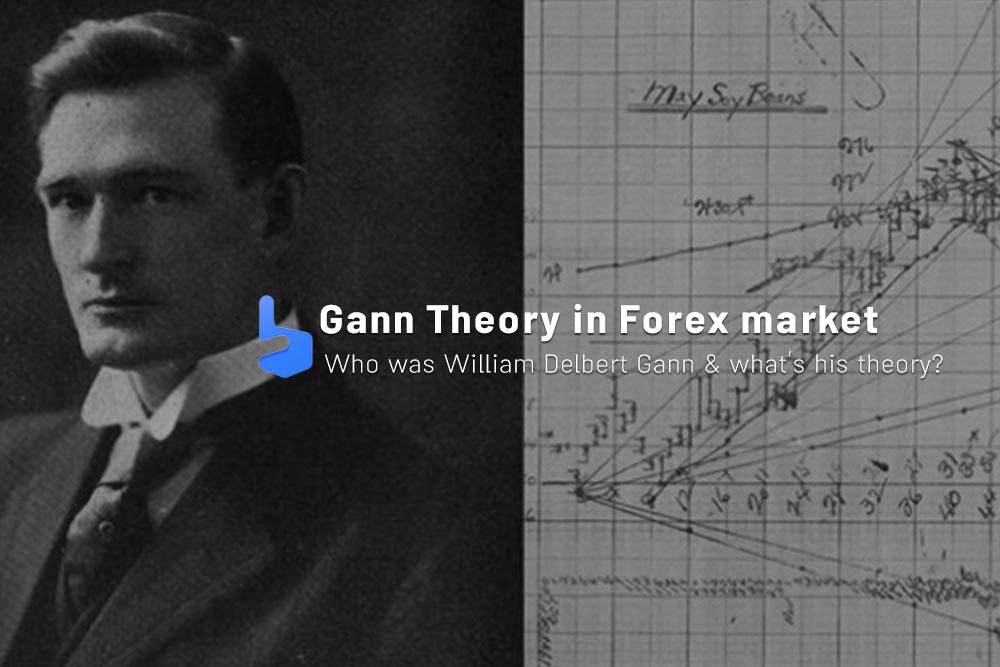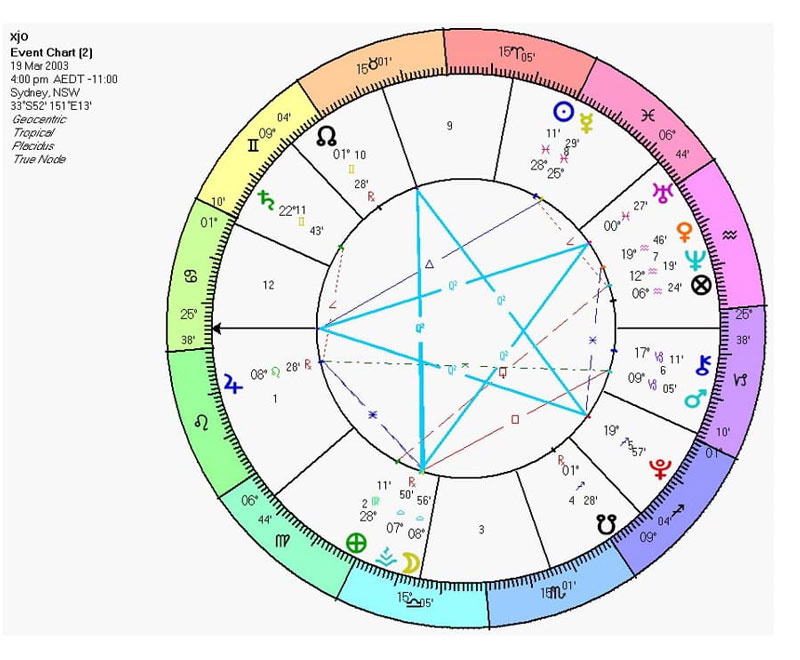What you are about to read:
In the world of Forex trading, amidst all these different methods of forex trading with AI and Price Action RTM, having a reliable trading strategy is essential for success. One approach that has stood the test of time is the Gann theory, developed by the legendary trader and market analyst, WD Gann.
This strategy, with its unique combination of mathematical precision, geometric analysis, and astronomical influences, provides traders with a comprehensive approach to market analysis and decision-making. In this article from Brokerland, we’ll delve into the principles of the Gann theory in Forex, familiarize ourselves with the best trader in history, William Gann, and examine how to apply it in the Forex market to enhance performance and profitability.
Who was William Delbert Gann?
The creator of the Gann theory in Forex, William Delbert Gann, commonly known as WD Gann, stands as a prominent figure in the history of Forex trading and technical analysis. Gann, born in 1878 in Lufkin, Texas, gained fame through his pioneering work in understanding and predicting market movements. With limited formal education, Gann embarked on a journey that led him to become one of the most famous traders of his time.
Gann’s fascination with financial markets began at a young age, and he devoted his life to studying their intricacies, eventually pioneering the Gann theory. He explored a wide range of fields, including mathematics, geometry, astrology, and market psychology, in pursuit of unraveling the secrets of market behavior. Through meticulous research and relentless experimentation, he developed a set of groundbreaking techniques and theories in the form of the Gann theory, revolutionizing the field of technical analysis.
One of Gann’s enduring contributions to Forex trading was his innovative use of geometric and mathematical principles to analyze price movements in the Gann theory. He introduced concepts such as Gann angles, Gann fans, and Gann squares, which provided powerful tools for identifying key support and resistance levels, predicting types of trend in financial markets, and timing market entry and exit.
Beyond his technical prowess, Gann was also renowned for his subtle understanding of market psychology and human behavior. He realized that emotions such as FOMO and greed often drive market movements and incorporated this insight into the Gann theory in Forex.
Throughout his professional life, Gann achieved remarkable success as a trader and amassed considerable wealth through his shrewd market predictions. His legendary trades and extraordinary ability to forecast market trends earned him a reputation as one of the greatest traders of all time.
Despite his achievements, William remained a mysterious figure, and many of his methods were shrouded in secrecy and controversy. Some regarded his techniques as mere superstition. Nevertheless, the impact of the Gann theory in Forex and technical analysis continues to endure, and traders still study and use his methods in their quest for success in trading.
Introduction to the Gann theory in Forex
The Gann theory, like many aspects of his work, is both complex and multifaceted, utilizing a combination of mathematical principles, geometric concepts, and astronomical influences. While its methods may be intricate, they are based on several core principles that traders have attempted to interpret and apply in the Forex market. Here’s a summary of the Gann theory:
- Geometric Analysis: William Gann believed that markets move based on geometric patterns and ratios. The core of Gann theory and his strategy included concepts such as squares, circles, and angles, which he used to identify key support and resistance levels and potential reversal points.
- Gann Angles: Also known as Gann lines, Gann angles are diagonal lines in the Gann theory in Forex that are drawn on price charts to identify trend lines and predict future price changes. These angles are derived from mathematical calculations based on price and time intervals.
- Time Cycles: Gann believed in the cyclical nature of markets. He identified specific time cycles such as days, weeks, months, and years that he believed influence market behavior. By analyzing these time cycles in the Gann theory, traders can predict potential turning points in the market.
- Astronomical Influences: An aspect of the Gann theory that has been both intriguing and controversial is his reliance on astronomical phenomena and financial astrology. He believed that planetary movements and celestial events affect market movements. Traders interested in Gann methods often incorporate astrological factors into their analysis.
- Price Squares and Grids: Gann’s use of price squares in the Gann theory, also known as Gann grids or Gann boxes, involved dividing price movements into equal increments and plotting them on a grid. These grids help identify key price levels and potential support and resistance areas.
- Market Psychology: Beyond the mathematical and geometric aspects, the Gann theory in Forex also emphasizes the importance of market psychology. Gann understood that emotions such as fear and greed drive market participants’ behavior and incorporated this insight into his trading approach. We’ve thoroughly examined this aspect in sentiment analysis.
Financial Astrology in Gann’s Strategy and Method
As incorporated into the Gann theory, the belief is that planetary movements and celestial events directly influence financial markets. William Delbert Gann, a prominent trader and market analyst, was known for incorporating astrological principles into his trading approach. He believed that specific planetary alignments and astronomical phenomena could impact market trends and price movements.
According to Gann theory, planetary positions, as well as aspects like conjunctions, oppositions, and retrogrades, can be signs of potential turning points or trend changes in the market. He developed various techniques to analyze these astrological influences and incorporate them into his decisions.
For instance, in Gann theory, relationships between planetary positions and historical market data are studied to identify correlations and patterns. He believed that specific planetary harmonies correlate with periods of increased volatility or trend changes.
Gann theory’s approach to financial astrology was highly personal, often keeping detailed charts and astronomical journals to track planetary movements and their potential impact on markets. He also incorporated astronomical cycles such as the 18.6-year lunar cycle or the 7-year Saturn cycle into his analysis and strategy.
It’s important to note that while William’s use of financial astrology may seem unconventional to some, it was a significant aspect of Gann theory in forex. However, this remains a controversial aspect, with many traders and analysts questioning its effectiveness.
Today, some traders interested in Gann’s methods and strategy in forex continue to explore financial astrology as part of their market analysis. However, this remains a specialized area within the broader technical and fundamental analysis, and its effectiveness is subject to debate and interpretation.
Gann Angles in Gann theory in Forex
Gann Angles, also known as Gann Lines or Gann Fans, are a key component of Gann theory and trading method developed by WD Gann, a legendary trader and market analyst. Gann Angles are essentially diagonal lines drawn on price charts to identify potential support and resistance areas and predict price movements in the future.
The concept of Gann Angles in Gann theory has its roots in geometry and mathematics. Gann believed that price movement in financial markets follows specific geometric patterns and angles. He identified key angles based on the relationship between price and time, particularly the price-to-time ratio.
Gann theory is initially derived from ratios such as 1:1, 1:2, 1:3, and so on, which each angle represents a specific slope or angle of ascent or descent. These angles are often drawn from significant price points, such as highs or lows, to predict future price levels.
For example, a 45-degree angle associated with the 1:1 ratio is considered significant in Gann theory. When plotted on a price chart, this angle can act as a trend line and indicate the direction and strength of a trend. Similarly, other angles, like 1:2 (representing a slope of 26.6 degrees) or 1:3 (representing a slope of 18.4 degrees), can provide further insight into potential support and resistance levels.
Traders use these Gann angles to identify key levels where price may encounter obstacles or change direction. When multiple Gann angles converge at a specific price level, it can indicate a significant area of support or resistance. Gann Angles can be applied across different time frames and financial instruments, making them a versatile tool for technical analysis.
Gann Fans
In Gann theory in forex, a series of Gann angles, as described above, when combined together, form a Gann Fan, resembling a hand-held fan. A Gann Fan consists of a series of diagonal lines drawn from a selected point on the price chart. Typically, this point represents a significant high or low in price action. Then, the lines are plotted at various angles based on specific geometric principles.
The initial angles used in Gann Fans in Gann theory are derived from the relationship between price and time. These angles are often based on ratios like 1:1 (45 degrees), 1:2 (26.6 degrees), 1:3 (18.4 degrees), and so on. Each angle represents a specific slope or rate of ascent or descent.
When plotted on a price chart, Gann Fans create a fan-like pattern of diagonal lines extending outward from a starting point. These lines in Gann theory act as potential support and resistance areas depending on their orientation relative to the current price movement.
In an uptrend, Gann Fan lines can act as support levels, with steeper angles providing stronger support. Conversely, in a downtrend, Gann Fan lines can act as resistance levels, with steeper angles indicating stronger resistance.
Traders use Gann Fans to identify key price levels where price may encounter obstacles or change direction. In the Gann theory, when multiple Gann Fan lines converge at a specific price level, it can indicate a significant area of support or resistance.
Gann Square of Nine
The Gann Square of Nine, also known as the “Wheel 24” or simply the “Square of Nine,” is a unique tool in technical analysis developed by WD Gann, a legendary trader and market analyst. It’s a mathematical structure used in financial markets to identify key support and resistance levels, predict price movements, and determine potential reversal points.
The Gann Square of Nine in Gann’s forex strategy is based on the concepts of numerology and geometry, consisting of a grid arrangement of numbers in a spiral pattern. The central number in the square is usually the starting point, with other numbers arranged around it in a sequential manner.
Here are the basic steps for constructing this square in the Gann theory:
- Start with a central number: The central number is usually chosen based on a significant price level, such as highs or lows.
- Arrange numbers in a spiral: Around the central number, other numbers are placed in a spiral fashion, following a specific sequence. This sequence is determined based on specific increments often determined by Gann’s mathematical calculations.
- Identify key levels: The numbers in the Gann Square of Nine represent potential support and resistance levels, as well as intersection and symmetry points. Traders use these key levels to predict price changes and decide on profit targets.
- Draw diagonal lines: Diagonal lines are drawn from the central number to the outer numbers in the square. These lines, known as Gann lines or angles in the Gann theory, help identify potential trend lines and predict future price changes.
Traders use the Gann Square of Nine strategy in forex trading in various ways, including:
Price prediction: Traders use the Gann Square of Nine to predict future price target levels based on the relationship between current price levels and numbers in the square.
Time cycles: Some traders use this Gann Square of Nine to identify potential time cycles and turning points in the market.
Pattern recognition: Traders look for patterns and symmetries within the square to identify trading opportunities and reversals.
Time and price analysis in the Gann theory
Time and price analysis is a fundamental aspect of the Gann theory in forex, emphasizing the importance of time and price in analyzing financial markets. Gann believed that price movements are not random but follow specific patterns and cycles influenced by time and price relationships.
According to Gann, time and price are related, and analyzing their interactions can provide valuable insights into market dynamics and potential price changes in the future. Here is the analysis of time and price in the Gann theory:
Time cycles: Gann identified various time cycles such as days, weeks, months, and years that he believed influenced market behavior. He observed that markets tend to move in cyclical patterns, with certain time intervals repeating regularly. By analyzing these time cycles in the Gann theory, traders can predict reversal points or trend changes in the market.
Price levels: Gann attached significant importance to specific price levels, such as ceilings, floors, and key support and resistance levels. He believed these price levels act as magnets for price movement and often act as barriers to further price advancement or decline. By identifying and analyzing these price levels, traders can anticipate potential price reversals or continuations.
Geometric relationships: Gann’s approach to time and price analysis also included studying geometric relationships between price and time. He developed various techniques such as Gann Angles, Gann Fans, and Gann Square of Nine, which combined geometric principles to identify key support and resistance levels and predict price changes in the future.
In general, time and price analysis in the Gann theory in forex is a holistic approach that considers both the temporal and spatial dimensions of market behavior. By analyzing the relationship between time and price, traders can gain a deeper understanding of market dynamics and make more informed trading decisions. However, it’s important to note that the Gann theory requires thorough understanding and diligent application and may not align with all traders.
Summary
In conclusion, the Gann theory in forex serves as a guiding light in the trading world, providing traders with a comprehensive framework for analyzing markets and making informed trading decisions.
This approach, emphasizing mathematical principles, geometric analysis, and astronomical influences, offers a unique perspective that can help traders navigate the complexities of the forex market with confidence and precision. While mastering the intricacies of the Gann theory may require time and commitment, the potential rewards in terms of improved trading performance and profitability make it a valuable endeavor for any serious trader.















